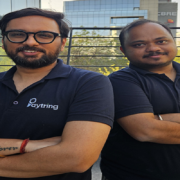McAfee Corp released India-specific findings ahead of the publication of its global report titled ‘Cyberbullying in Plain Sight’. The McAfee Cyberbullying Report, a ten-country survey including India, uncovered several new and consequential trends regarding cyberbullying including the types of bullying being reported, data around who is the perpetrator and victim of bullying online, and the tensions between how parents and children define cyberbullying activity. This survey also uncovered the startling fact that many children take part in cyberbullying, often without realizing their behavior for what it is, while parents struggle to keep up.
Leading amongst all other nations, 85% of Indian children reported being cyberbullied as well as having cyberbullied someone else at rates well over twice the international average. According to Indian parents, 42% of children have been the target of racist cyberbullying, strikingly 14% higher than the rest of the world at 28%. Extreme forms of cyberbullying reported besides racism include trolling (36%), personal attacks (29%), sexual harassment (30%), threat of personal harm (28%) and doxing (23%), all of these at almost double the global average. India also reported prominent acts of cyberbullying such as spreading false rumors at 39%, being excluded from groups and conversations at 35% and name calling at 34%. Indian children witness and experience the maximum cyberbullying on almost every social media and messaging platform. 45% of Indian children said they hide their cyberbullying experiences from parents, perhaps due to the relative absence of conversation.
“Cyberbullying in India reaches alarming highs as more than 1 in 3 kids face cyber racism, sexual harassment, and threats of physical harm as early as at the age of 10 – making India the #1 nation for reported cyberbullying in the world,” said Gagan Singh, Chief Product Officer, McAfee. “Parents are displaying important gaps of knowledge around cyberbullying but even more concerning, children aren’t considering behaviors like jokes and name-calling harmful online. Our mission with this research is to inform parents and families of what children are experiencing online and then empower parents to act where appropriate.”
McAfee’s 2022 Cyberbullying in Plain Sight Report
This study aims to further McAfee’s commitment to helping connected families stay not only safe but also educated about behaviors that could put their families at risk for serious online threats. It follows McAfee’s Global Connected Family Study, which was released earlier this year and revealed cyberbullying among children was one of the biggest vulnerabilities that families face today. The new McAfee Cyberbullying Report aimed at fully understanding the extent, ways and forms in which children face cyberbullying and highlight gaps in how parents manage these experiences.
In India, four key themes emerged:
- Indian Children – the Highest Rate of Being Cyberbullied, and of Being the Cyberbully, in the World: 3 out of 4 children admitted to engaging in at least one activity that could be described as cyberbullying, compared to less than half of children elsewhere who admitted to such activities.
- Leading all other nations, 85% of Indian children said they’ve been cyberbullied.
- Indian children say that they’ve cyberbullied someone else at rates well over twice the international average.
- 45% said they cyberbullied a stranger, compared to 17% worldwide—and 48% said they cyberbullied someone they know, versus 21% of children in other countries.
- The top three forms of cyberbullying reported in India were spreading false rumors at 39%, being excluded from groups/ conversations at 35% and name calling at 34%.
- Indian Children Face the Most Extreme Forms of Cyberbullying at the Highest Rates: Children report high rates of cyberbullying in its most severe forms including racism, sexual harassment, and threats of physical harm.
- More than 1 in 4 kids globally face racist behavior online, and concerningly, 22% of kids as young as 10 years old are facing it around the world.
- Across all nations surveyed, India reports the highest rate of racist cyberbullying in the world. According to parents, 42% of Indian children have been the target of racist cyberbullying, a full 14% higher than the rest of the world at 28%.
-
- Children in India also report among the highest rates of cyberbullying in its other most severe forms, often at twice the rate compared to other children. This includes:
- Trolling (antagonistic attacks) at 36% versus 19% worldwide.
- Personal attacks at 29% versus 16% worldwide.
iii. Sexual harassment at 30% versus 15% worldwide.
-
-
-
- Young girls in India see some of the highest rates internationally, with girls 10 to 14 at 32% and girls 15 to 16 at 34%.
-
-
- Threat of personal harm at 28% versus 13% worldwide.
-
-
-
- Young girls in India see some of the highest rates internationally, with girls 10 to 14 at 32% and girls 15 to 16 at 34%. However, this figure drops significantly at ages 17 to 18, down to 21%.
-
-
- Doxing (publishing private information without consent) at 23% versus 9% worldwide.
- Indian children experience the highest rates of cyberbullying on almost every social media and messaging platform:
- Indian children reported cyberbullying up to 1.5 times more than children in other countries across fourteen surveyed platforms, ranging from Facebook and Instagram to Snapchat and WhatsApp. The one exception is TikTok, which remains banned in India.
- Indian children said they are more likely to be cyberbullied by someone they know at 66% compared to 57% elsewhere.
- Indian children said that they are more likely to be cyberbullied by strangers compared to other children around the world, at 70% in India versus 45% worldwide.
- Indian parents harbor the highest concerns yet speak with children less about them. Children hide cyberbullying from parents:
- When asked how they addressed cyberbullying with their children, only 48% said they turned to conversation—well below the international average of 64%.
- Indian parents said they were far more likely to address cyberbullying by taking actions that involve resources outside of the household. This includes speaking with school officials (61%), coaches and camp counselors (51%), and changing schools (25%), all up to twice the international rate.
- Perhaps due to the relative absence of conversation, 45% of Indian children say that they hide their cyberbullying experiences from their parents, compared to just 25% of children globally.
- India children reported that they are more likely to address cyberbullying themselves. Nearly 3 out of 5 (58%) children said that they have deleted a social media account to avoid cyberbullying, versus the 33% global average—and 87% said they talk to their friends about cyberbullying, which is 25% above the international figure of 62%.
What to Do When Your Child Faces Cyberbullying:
- Turn to experts – reach out to counselors, consultants or your local organizations to gather resources and knowledge about the mental health effects of bullying on children.
- Create an environment of open and honest communication within your connected family. Demonstrate to your children that you understand these experiences can happen online, and that you will serve as a source of support and protection in their time of need.
- Produce a family plan in the event of cyberbullying. Unfortunately, cyberbullying can occur to any child with a digital presence – ensure your family has a plan in place that has been communicated to the children themselves who experience life online and are at risk.
- Educate yourself and children on what it really means to cyberbully – relay the message that making a joke at someone else’s expense or name calling online are types of bullying that need to and understand that today’s definition of cyberbullying is evolving.
- Take action to protect your connected family. McAfee’s family plans include parental controls to help protect your children from inappropriate online behavior, apps, and content and build good digital habits
Survey Methodology
The research was conducted between June 15 – July 5, 2022, by market research company MSI-ACI via email inviting parents of children in the age 10 – 18 to complete an online questionnaire. In total 11,687 parents and their children completed the survey from 10 countries included the United States, United Kingdom, France, Germany, Australia, India, Canada, Japan, Brazil, and Mexico. The parents were asked if their children between the ages of 10 – 18 years old were available to complete a survey. If yes, the parent was asked to complete a few questions themselves before turning over the survey to their child.








